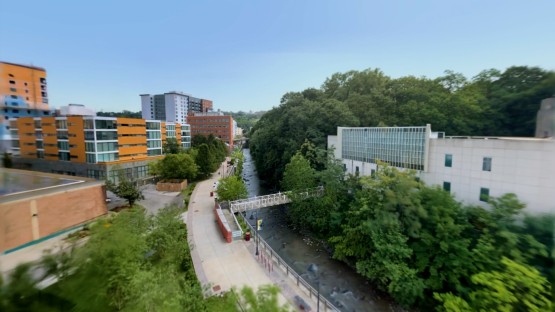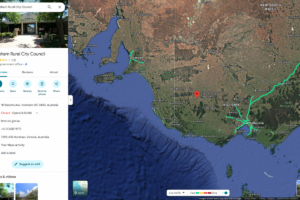
When you think of “time-lapse video,” the image of a camera fixed on a tripod, capturing frames at set intervals, often comes to mind. However, a groundbreaking development from a Cornell University research group is set to change this perception. Imagine creating a time-lapse video by simply snapping a photo with your phone each time you pass a familiar tree on your way to work—no tripod required.
This innovative software, known as “Pocket Time-Lapse,” allows anyone with a camera-equipped mobile phone to capture subtle changes over time, whether it’s a construction site evolving or the seasons shifting. The project, led by Abe Davis, an assistant professor of computer science at the Cornell Ann S. Bowers College of Computing and Information Science, will be presented at the prestigious Association for Computing Machinery’s SIGGRAPH 2025 conference in Vancouver, British Columbia, from August 10-14.
From Pandemic Challenges to Innovative Solutions
The journey to this innovation began in the summer of 2020, during the early days of the COVID-19 pandemic. With traditional lab setups rendered impossible by lockdowns, Davis turned to the outdoors for inspiration. “Even under lockdown, we could still go outdoors,” Davis explained. “So I started thinking a lot about how to support field work—applications where people need to collect data outside, in uncontrolled settings.”
Armed with a cellphone, Davis began capturing images from various locations around Ithaca, amassing over 50,000 photos over several years. These images, taken from everyday spots such as his apartment window, a bus stop, and a parking garage overlooking a construction site, formed the basis for the time-lapse videos.
Technical Breakthroughs in Image Alignment
Collaborating with Eric Chen, a doctoral student at the Massachusetts Institute of Technology, and other contributors like Žiga Kovačič and Madhav Aggarwal, Davis’s team developed new techniques to align and visualize the extensive dataset. “We had to figure out a new trick for doing this alignment,” Chen noted, “that takes advantage of the fact that we have so much data over such a long period of time that sees so many different conditions.”
One of their key innovations is a method called “time splatting,” which uses the sun’s position, local GPS coordinates, and weather data to accurately position shadows in the video. This allows the software to re-light photos from sunrise to sunset or alter lighting conditions from day to night.
Applications and Future Implications
The potential applications for Pocket Time-Lapse are vast, spanning fields such as environmental science, construction, and healthcare monitoring. Davis envisions this tool as a means to view one’s environment in a new light. “This tool gives you a different way to look at the world,” he said. “Most of the data for this project comes from places I see every day, but there are so many little details I never noticed until I saw them in a time-lapse.”
Support for this pioneering work came from the National Science Foundation Graduate Research Fellowship Program, an NSF Faculty Early Career Development Grant, and Meta. As the software continues to develop, it promises to democratize the creation of time-lapse videos, opening up new avenues for both amateur and professional photographers alike.
With its presentation at SIGGRAPH 2025, Pocket Time-Lapse is poised to capture the imagination of the tech community and beyond, offering a fresh perspective on the world through the lens of everyday technology.






